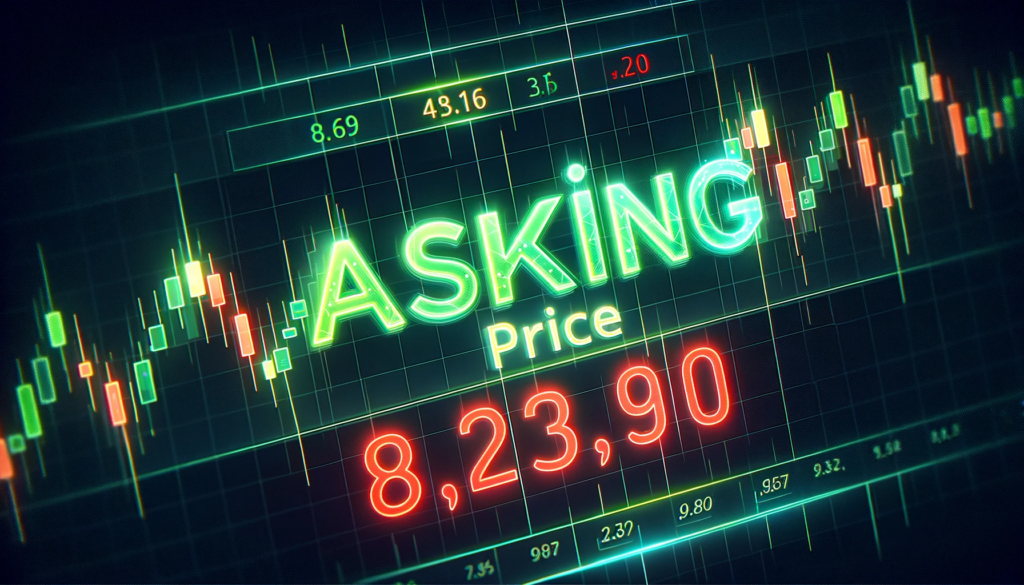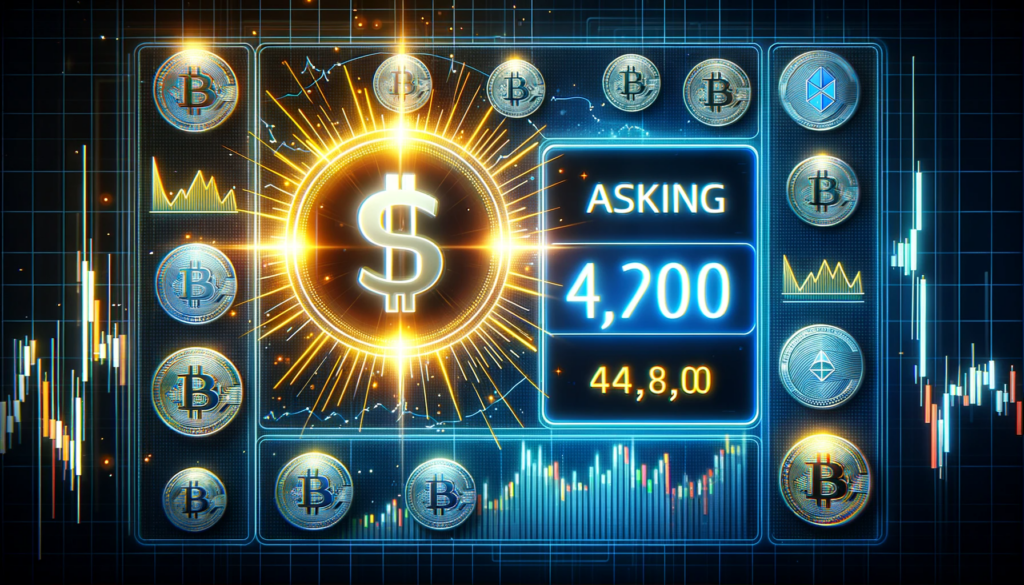In the realm of cryptocurrency trading, the term ‘asking price’ is a fundamental concept that every trader should be familiar with. It is a term that is deeply rooted in the mechanics of trading and is crucial to understanding how trades are executed on an exchange.
What is the Asking Price?

The asking price, also known as the ‘ask’, is the lowest price a seller is willing to accept for an asset they are selling on an exchange. It represents the minimum amount a seller expects to receive in return for the unit of the asset they are parting with.
In the context of a cryptocurrency exchange, the asking price is set by those who hold a particular cryptocurrency and are looking to sell it. These asking prices, along with the buying prices or ‘bids’, form the basis of the exchange’s order book.
The Role of the Order Book in Determining the Asking Price
The order book of an exchange is a real-time list of buy and sell orders for a specific cryptocurrency. It is here that the highest bid price and the lowest asking price are matched and filled when a trader uses a market order.
In other words, a selling market order will match the highest bid, and a buying market order will match the lowest asking price. The difference between the lowest asking price and the highest bid price is known as the ‘spread’ of the market.
The Significance of Market Liquidity and Spread
Market liquidity plays a significant role in determining the spread. A liquid market, characterized by a high number of orders, tends to have a smaller spread. This is because there are more people in the market willing to place an order into the order book, thereby reducing the gap between the buying and selling sides.
Limit Sell Orders and Market Orders: The Choice is Yours
When setting a limit sell order, a trader can define a specific asking price. However, if their price is not the lowest, it will not be the first one to be filled. Instead, it will add depth to the existing order book for that asset.
On the other hand, when using a market order, traders do not have the ability to set the asking price manually. Their order will be executed instantly at the best price available, matching the highest bid of the order book.
The Interplay of Supply and Demand
In the world of cryptocurrency trading, the asking price is a direct reflection of the market’s supply and demand dynamics. When there is a high demand for a particular cryptocurrency, sellers can afford to set a higher asking price. Conversely, when demand is low, sellers may have to lower their asking prices to attract buyers.
The Impact of Market Volatility on Asking Price
Cryptocurrency markets are known for their volatility. This volatility can cause significant fluctuations in the asking price. During periods of high volatility, the spread between the highest bid and the lowest asking price can widen, leading to potential opportunities for traders.
The Influence of Market Sentiment
Market sentiment, or the overall attitude of investors towards a particular asset, can also influence the asking price. Positive market sentiment can lead to an increase in the asking price, as more traders are willing to buy. Conversely, negative sentiment can lead to a decrease in the asking price, as more traders are looking to sell.
The Role of Market Orders in Price Discovery

Market orders play a crucial role in price discovery, the process of determining the price of an asset in the marketplace through the interactions of buyers and sellers. By matching the highest bid with the lowest asking price, market orders help to establish the current market price of a cryptocurrency.
The Importance of Strategic Order Placement
Strategic order placement can help traders optimize their trades. By carefully considering the current market conditions and setting their asking price accordingly, traders can increase their chances of having their orders filled.
In conclusion, the asking price is a fundamental concept in cryptocurrency trading. Understanding its dynamics can provide traders with valuable insights, helping them to navigate the market more effectively and make more informed trading decisions.
Conclusion
In the intricate world of cryptocurrency trading, the asking price serves as a cornerstone. It is a reflection of the market’s pulse, embodying the interplay of supply and demand, market sentiment, and liquidity. Understanding the dynamics of the asking price is not just about knowing the lowest price at which a seller is willing to part with their asset. It’s about comprehending the market forces that influence this price and using this knowledge to make strategic trading decisions.

